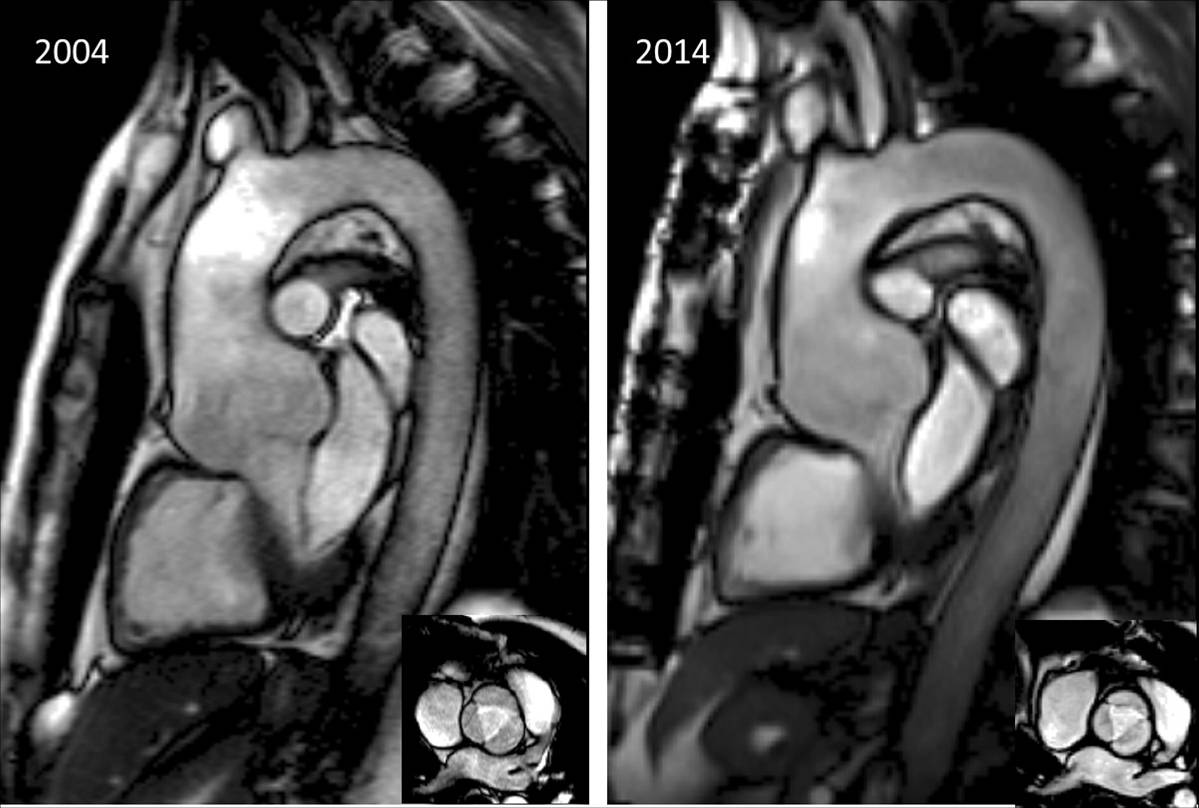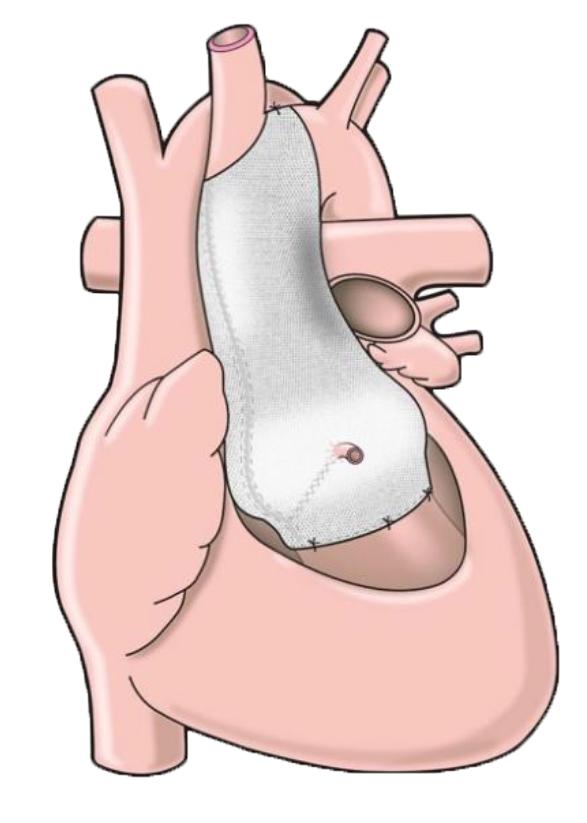Aortic dilation is the enlargement of the aorta, the main blood vessel that carries blood from the heart.
It is most commonly associated with connective tissue diseases such as Marfan syndrome, Loeys-Dietz syndrome and Ehlers-Danhlos syndrome.
In its early stages, aortic dilation may not have any symptoms. It is most frequently detected during routine testing such as an echocardiogram or MRI.
Aortic dilation puts people at greater risk of aortic dissection, which can have life-threatening consequences. Generally speaking, an aortic diameter of more than four cm may increase the risk of dissection.
Managing the condition requires surgical treatment. The ExoVasc® PEARS is one type of treatment. It has been used to manage aortic dilation in conditions including Marfan syndrome, Loeys-Dietz syndrome, Ehlers-Danhlos syndrome, bicuspid aortic valve, Turner syndrome, SMAD3, MYBCP3, NOS, FAAP, FTAAD, transposition of the great arteries/aortic switch operation and freestanding root Ross dilation.
The left hand image is a CT scan of Tal Golesworthy’s aorta in 2004 before Aortic PEARS surgery. The right hand image is a CT scan of Tal Golesworthy’s aorta in 2014, ten years after Aortic PEARS surgery and shows how the ExoVasc® PEARS has stabilised the aorta.

More about the Aortic PEARS procedure
Find out more about the procedure.
Patient stories
More than 1,500 people have had an ExoVasc® PEARS implanted. Some of them have shared their stories and experiences.
Patient benefits brochure
You may find our patient benefits brochure useful when discussing the ExoVasc® PEARS with your doctor.




